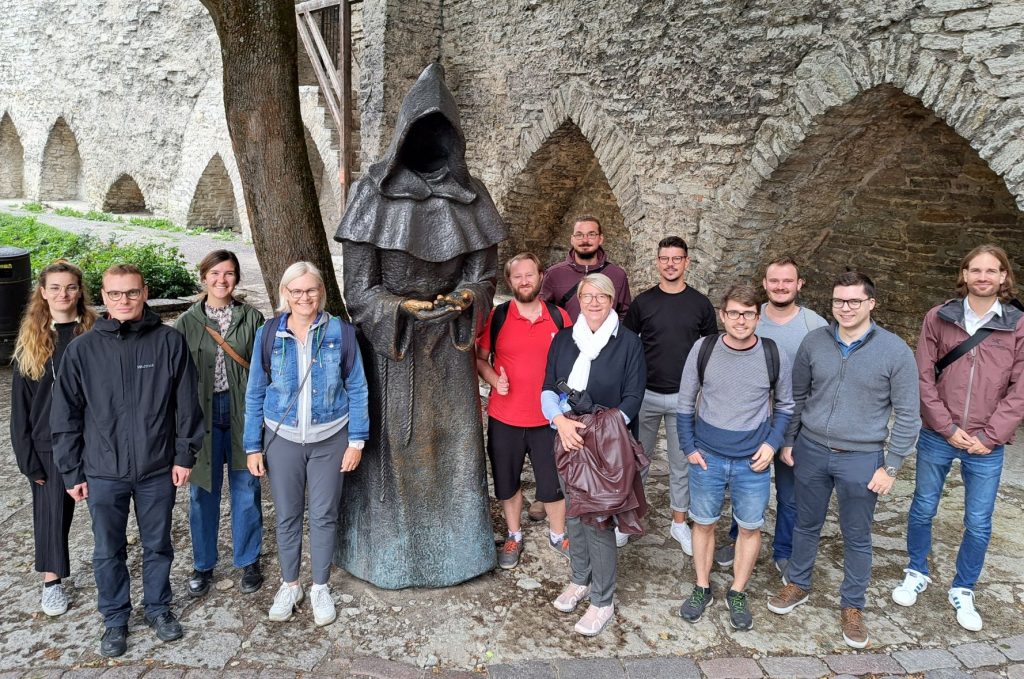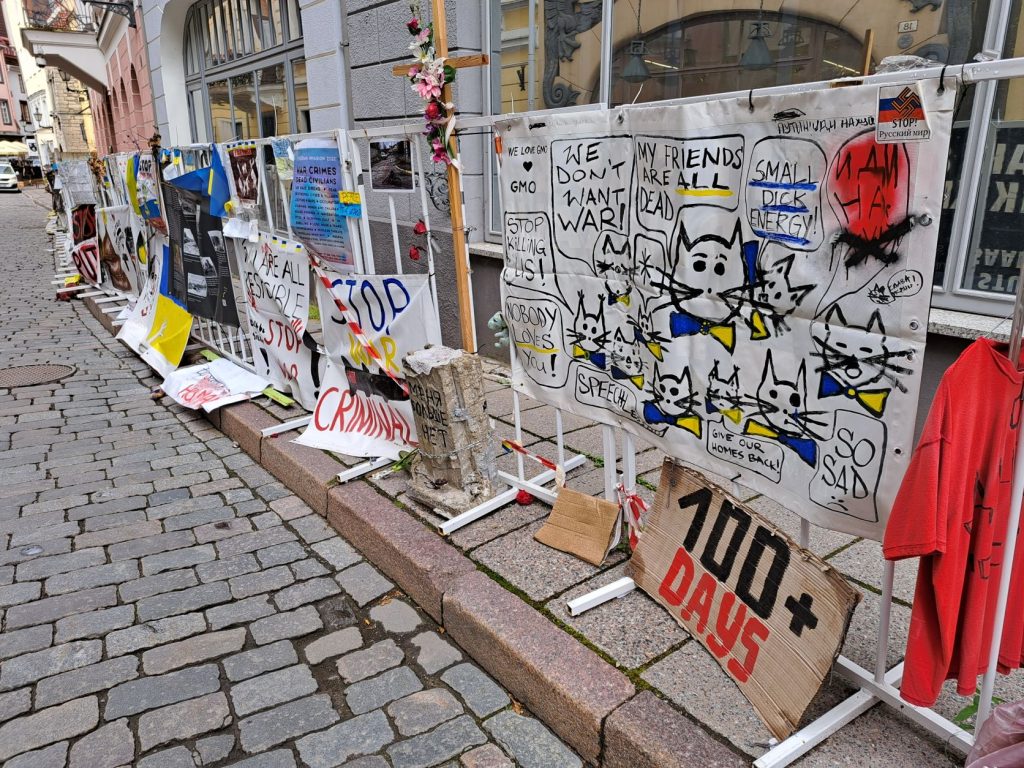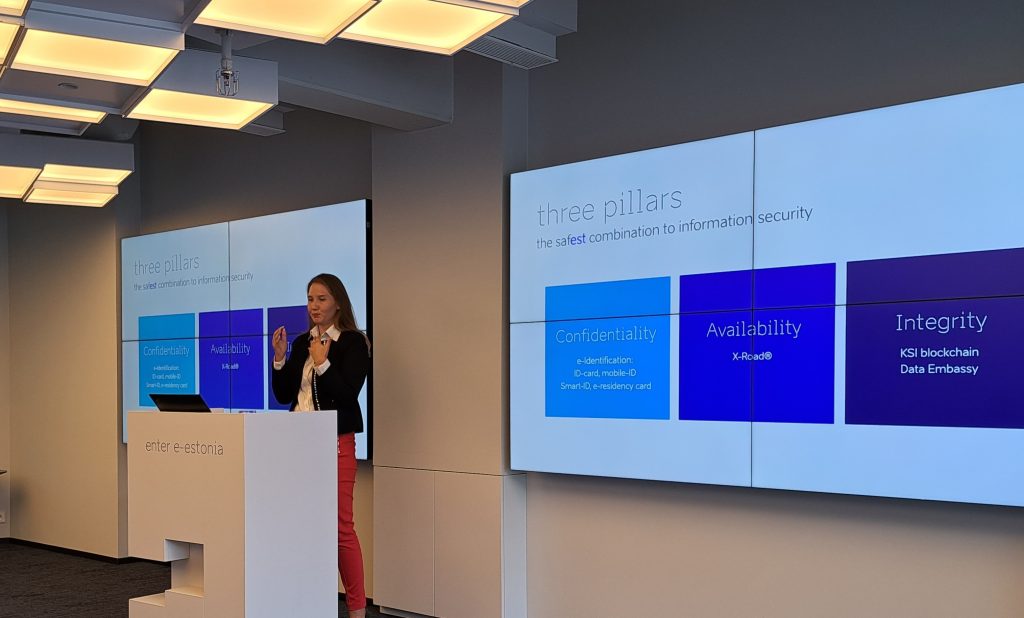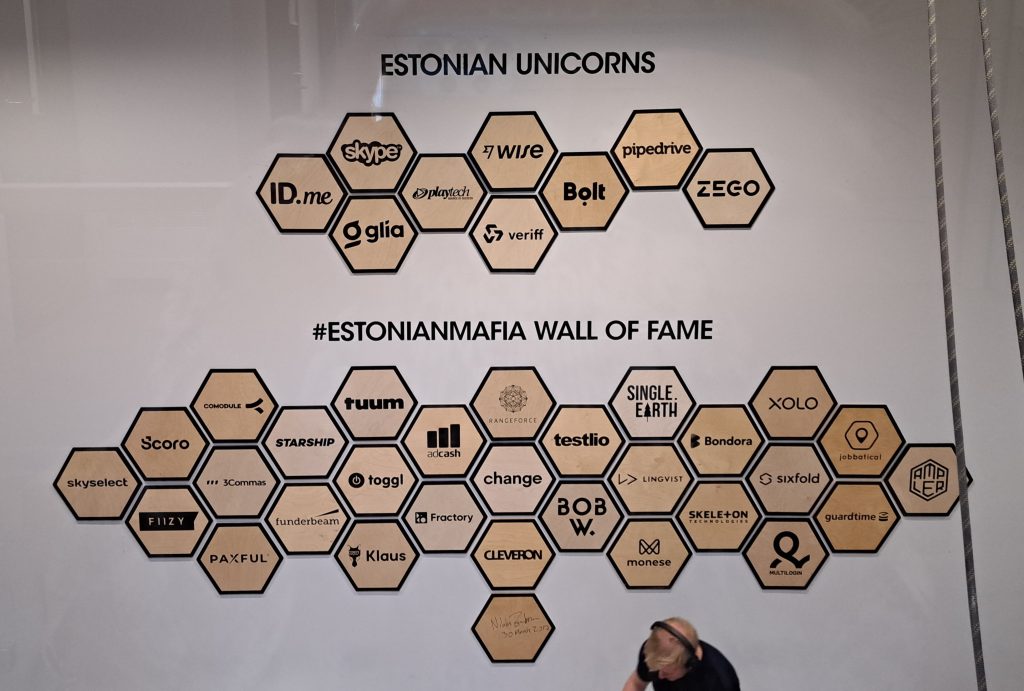Already during check-in you could feel the high digital standard of the country: No human person was greeting us, just a box with a screen to register and get the key to your room. Digitalization is also the main topic of the first days of this year’s study trip. Today we’ll start the week with a tour of the old town of Tallinn, as well as visits at the E-Estonia briefing center and LIFT99, a co-working space in the hipster part of the city.

As mentioned above, on our first day we’re not joined by sunny weather. However, our tour guide, a 2 meter Estonian giant, is just as motivating and so we start our way to the old town. During the tour we get a lot of interesting answers to never asked questions. For example:
– Why did Estonia almost go bankrupted in 2002? Because they won the Eurovision Song Contest in 2001 and had to host it the following year.
– Who won the first war for Estonia? Definitely not the Finish.
– What do Estonians do after work? Fighting bears in the woods (because tourist security is very important to them).
– Why was Estonia liberated in 1991? Because their singing was so terrible the Soviet occupants left voluntarily.
– How did Etonia manage to win two consecutive battles against Denmark? By getting the Danish soldiers drunk and killing them with their own weapons.
– Why does the monk statue by the city wall have wide sleeved? So drunk tourists won’t get stuck in between his arms.
But even though the humour of our guide was very refreshing, he ended the tour on a more serious note. When asked about the NATO battleship in Tallinn’s harbour, he admitted that Russia’s aggressions against the Ukraine were very worrying. Just last week the Estonian government decided that no more Schengen visa will be given to Russian citizens. These trends are supported in front of the Russian embassy: Next to terrifying photographs of the war, stuffed animals and billboards show the sympathy for Estonia’s brothers and sisters. These sentiments against Russia must go back to Estonia’s own Soviet occupation until 1991.

After their independence more than 30 years ago the digital state could be planned out on a clean slate. This is what tells us Erika Piirmets of the E-Estonia briefing center we meet after a quick lunch. It’s also she who tells us that the main reason of Estonia’s fast development is a general mindset of “let’s try”. Plus: Estonia is a small and not extremely rich country. Thus, gouvernemental processes need to be highly efficient because there is neither money nor people to do unnecessary tasks. The result: 99% of services are provided digitally and 99.6% of bank transactions take place online. The e-services are so well done that paying taxes is even seen as a kind of national sport in Estonia. Also, the government is able to save up to 2% of the nation’s GDP thanks to the e-signature. This allows it to focus on more urgent topics like national security.
Of course, when speaking of digitalization you have to mention the digital divide within the population. Estonia addressed this problem by introducing coding classes already to primary schools and free tutorials to the whole population. Also, companies took matters in their own hands and offer classes to their employees.
Over all, the Estonian government has four principles for the digitalization of the public sector:
1. Citizen Centricity: Citizens are seen as customers instead of merely tax-payers and are to be kept satisfied
2. Public-Private-Partnerships: The state profits from the knowledge of private companies – and vice versa
3. Reliable internet connection
4. All individuals own their personal data and know how their personal data is being used at all time
The digital state is made possible by the E-ID. After being criticized to be no more than a window scratcher after its implementation, today it allows e-banking and holds information about prescriptions, telecommunication, driving licences as well as travel documenzs. Also, it allows e-residency thanks to which you can start a business in Estonia within 15 minutes (world record!).

Next to the digital divide, another big challenge of digitalization is data security. In Estonia, data is stored in a very de-centralized way. Also, government data is not mixed and it’s prohibited to duplicate it. Likewise, only the minimum amount of data is collectes.
When listening to Eva Piirmets you ask yourself: Is there even any potential to enhance the digital state of Estonia? And the answer is: Yes! Currently, Estonia is staring to integrate the “proactive government”, which will facilitate citizens’ lives even more. For example, by automatically paying family benefits to young parents or by providing information about unemployment as soon as someone looses their job. Also, artificial intelligence is a big topic, as well as personalized medicine to prevent diseases from spreading.
Our last stop was the co-working space LIFT99. It’s a hotspot for founders of startups from all over the world. And their #estionianmafia wall of fame speaks for itself: Big names like Bolt or Skype started here. And the wall is spreading rapidly. Maybe this is thanks to LIFT99’s effort to support young entrepreneurs. It offers not only desks, but events and a strong culture of accepting failure. In the end of his presentation, Rannar Park, team leader and community manager of LIFT99, tells us about the achilles heel of the Estonian startup-ecosystem: There is almost no connection between universities and startups. Rannar Park assumes this is because tech students are already hired by companies during their studies and leave the universities before they even graduate.
The biggest benefits of working at LIFT99 must be the possibility to connect with other innovators and possible investors. I guess, Eva Piirmets comment about digitalization also applies to startups: It’s not a question if technology, but of bringing stakeholders together.
